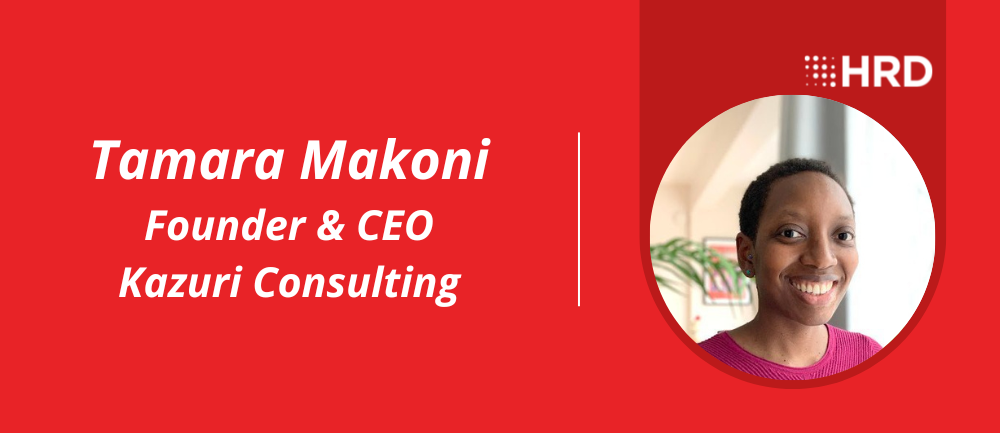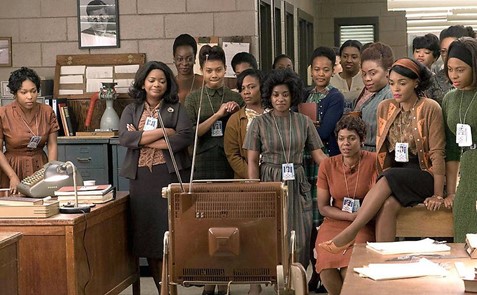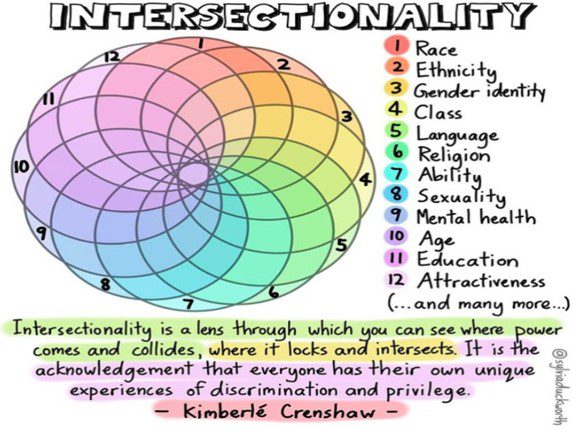Intentional about intersectionality: Tackling DE&I from the bottom up
- 6 Min Read
Businesses can achieve diversity by ensuring representation of people with a variety of backgrounds and perspectives, but inclusion and equity come when organizations create the right conditions for everyone to thrive. Understanding the human experience of employees is crucial for this. And as part of this, businesses must acknowledge that not all groups face the […]
- Author: Tamara Makoni
- Date published: Jan 30, 2023
- Categories

Businesses can achieve diversity by ensuring representation of people with a variety of backgrounds and perspectives, but inclusion and equity come when organizations create the right conditions for everyone to thrive. Understanding the human experience of employees is crucial for this. And as part of this, businesses must acknowledge that not all groups face the same barriers to access and belonging.
Intersectionality is a core concept within DE&I, and businesses are increasingly seeing that understanding and addressing it is vital to secure meaningful impact. Let’s explore why, and how to make it a priority.
What is intersectionality?
Intersectionality is a framework used to understand how systems of inequality intersect to create unique forms of discrimination and oppression. Kimberlé Crenshaw popularized the term in 1989 about Black women’s experiences in the US criminal justice system. It clearly comes to life in the film Hidden Figures.

Hidden Figures chronicles the work of Black women at NASA during the1960s and the pivotal role that it played in enabling the US to achieve pioneering feats like the moon landing. It also clearly shows the strict hierarchy that was in force at that time. White men at the top, followed by White women with Black women occupying the bottom rung.
The compounding effect
The film highlights the intersection of sexism and racism. Black women had less power and status than White men due to gender and race. This is what we commonly refer to as compounding. Individuals face unique types of discrimination on account of more than one marginalized characteristic.
This compounding is why, for instance, the climate crisis disproportionately affects poor women of color. Thanks to systemic inequity, they are more likely to work in more precarious industries and receive less income than other demographics for doing the same work. This limits their ability to invest in mechanisms to cope with the effects of climate change. They also hold less social and political capital. they are therefore less likely to influence policy and be involved in making decisions that impact their lives.
In the case of Hidden Figures, tackling either racism or sexism in isolation would not have effectively solved Black women’s challenges. In the absence of racism, they would still have less power and status than men. And in the absence of sexism, they would still be subordinate to the White employees because of their race.
Approaching DE&I through an intersectional lens
An intersectional approach to DE&I refuses to look at issues like racism, homophobia, and ageism as isolated, singular phenomena. Instead, it considers every person’s identity as multi-layered. It acknowledges that we don’t all experience discrimination and oppression in the same ways, or to the same extent. Its focus is securing equity through solutions that are inclusive by design.
I propose three starting points for designing initiatives and solutions to achieve this:
- Create opportunities to raise awareness about intersectionality
- Drill into data
- Include and center those most disadvantaged

Create opportunities to raise awareness about intersectionality
In addition to formal education like training, enable interactions where employees can learn from others who represent similar and different identities and perspectives. Signpost employees to resources like books and articles that cover identity and intersectionality. Encourage them to engage with these resources at their own pace. And leverage the power of employee resource networks (ERNs) to connect individuals and foster safe spaces for sharing experiences.
But there is a caveat. Companies typically organize ERNs around a single identity marker (e.g., gender, sexuality). This can cause division and fail to accommodate intersectional identities without attention and thought. A leading practice is to put structures in place that allow employees to join multiple networks. Moreover, empower different networks to share ideas and co-lead initiatives.
Samsung, for instance, launched a collaboration in 2020 between two ERNs to explore the intersection between race and sexuality, as well as open forums to invite employees from marginalized backgrounds to share experiences and discuss solutions.
Drill into data
When researchers took a closer look at data that showed women in the US experienced lower rates of sexual harassment in 2016 than 30 years previously, they found this was true for White women only. For women of all other races, the rate of harassment during that time largely stayed the same. Similarly, data collected by PwC for their 2021 Ethnicity Pay Gap report finds that while men out-earned women in general, women in the White and Black African (mixed race), Bangladeshi, and other mixed ethnicity categories out-earned their male counterparts.
The lesson here? If you’re looking at your data through only one lens, you’re not seeing the whole picture. Disaggregate quantitative data by gender, location, seniority, ethnicity, migration status, and more to identify trends that aren’t visible in the aggregated data. And don’t overlook qualitative data. Information gleaned from focus groups, informal interactions, 1:1 meetings (e.g. exit interviews), and other means like comment fields on surveys can offer vital nuance to help you truly understand different groups’ day-to-day reality.
Include and center those most disadvantaged
Crenshaw suggests that rather than a top-down approach to fighting discrimination, we start by addressing the problems faced by those most disadvantaged by the system. Why? Because doing this benefits any other groups that are singularly disadvantaged. Think back to Hidden Figures. Any initiative to remove inequities faced by Black women on account of their race and gender would have helped empower their White female colleagues too.
This notion is key to Ludmila Praslova’s Canary Code. Developed to promote inclusion for people with autism, the Canary Code offers six key principles for employers to embed within their talent cycle. Eacremovesve systemic barriers. They include participation, focus on outcomes, flexibility, focus on organizational justice, transparency, clear communication, and valid tools for decision-making.
Importantly, Praslova advocates for actively involving marginalized people in the design process to properly implement the Canary Code. The result is solutions that are more inclusive, more robust, and more resilient. After all, who is better placed to advise on effective strategies to empower people at identity intersections than those individuals themselves?
________________
Tamara Makoni is an inclusion specialist who helps leaders embed inclusion into processes and systems to empower diverse talent. She works with clients across sectors as a speaker, facilitator and strategic advisor, and is founder and CEO of Kazuri Consulting.








